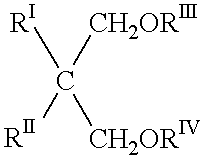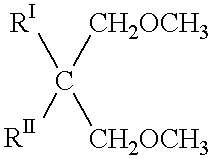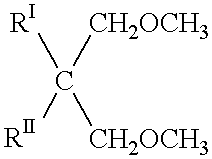Process for the gas-phase polymerization of olefins
a gas-phase polymerization and olefin technology, applied in the field of gas-phase polymerization of olefins, can solve the problems of increased heat removal, unexpected increase in the amount of heat evolved by the reaction, and inability to remove sufficiently quickly and efficiently
- Summary
- Abstract
- Description
- Claims
- Application Information
AI Technical Summary
Problems solved by technology
Method used
Image
Examples
example 2
HDPE was prepared using the plant arrangement described in Example 1.
The run was carried out by feeding the catalyst components into the pre-contacting vessel which was kept at a constant temperature of 20.degree. C.
The product discharged from the vessel was fed to a loop prepolymerizer into which liquid propylene and propane (as inert medium) were fed.
The residence time in prepolymerization was about 82 minutes and the temperature was kept constant at 20.degree. C. The fluid contained in this prepolymerization reactor was in a liquid state.
The liquid propylene was almost completely converted to solid polypropylene with a yield with respect to the solid catalyst component of about 400 grams of polypropylene per gram of catalyst component. The residual quantity of propylene discharged with the polymer from the prepolymerizer was flashed in order to have negligible quantities of propylene fed to the gas phase reactor.
The first reactor, which received the prepolymer produced in the pre...
example 3
The run was carried out by feeding a catalyst prepared according to Example 1, and batch prepolymerized with propylene directly into a single gas-phase reactor.
The temperature of the gas-phase reactor was 80.degree. C. and the pressure was 2 MPa.
The gas components fed to the reactor were the following:
ethylene and butene;
hydrogen as molecular weight regulator;
At the beginning, before feeding the prepolymerized catalyst to the gas-phase reactor, the propane concentration in the gas-phase was kept at about 60% molar. A smooth run was performed with the above indicated initial propane concentration.
Decreasing the initial propane concentration below 30% molar resulted in the formation of large aggregates due to the very high reactivity inside the gas-phase reactor.
The run conditions in the smooth test are reported in Table 3.
example 4
The test was carried out by using the following plant arrangement:
precontact stage;
prepolymerization stage;
gas-phase polymerization stage (the polymerization was performed by using two gas-phase reactors connected in series).
The run was carried out by precontacting a solid catalyst component, Al-triethyl and methylcyclohexyldimethoxy silane in the ratio used in Example 1 in the precontacting vessel, which was kept at a constant temperature of 40.degree. C. The catalyst component was prepared from a MgCl.sub.2 ethanol adduct containing 50% by weight of alcohol.
To this vessel propane was also fed, as inert reaction medium, and the resulting residence time was about 13 minutes.
The product discharged from the vessel was fed into a prepolymerizer into which propylene and propane (as inert medium) were also fed.
The residence time in prepolymerization was about two minutes and the temperature was kept constant at 20.degree. C.
The fluid contained in this prepolymerization reactor was in a l...
PUM
| Property | Measurement | Unit |
|---|---|---|
| Fraction | aaaaa | aaaaa |
| Percent by mass | aaaaa | aaaaa |
| Percent by mass | aaaaa | aaaaa |
Abstract
Description
Claims
Application Information
 Login to View More
Login to View More - R&D
- Intellectual Property
- Life Sciences
- Materials
- Tech Scout
- Unparalleled Data Quality
- Higher Quality Content
- 60% Fewer Hallucinations
Browse by: Latest US Patents, China's latest patents, Technical Efficacy Thesaurus, Application Domain, Technology Topic, Popular Technical Reports.
© 2025 PatSnap. All rights reserved.Legal|Privacy policy|Modern Slavery Act Transparency Statement|Sitemap|About US| Contact US: help@patsnap.com



